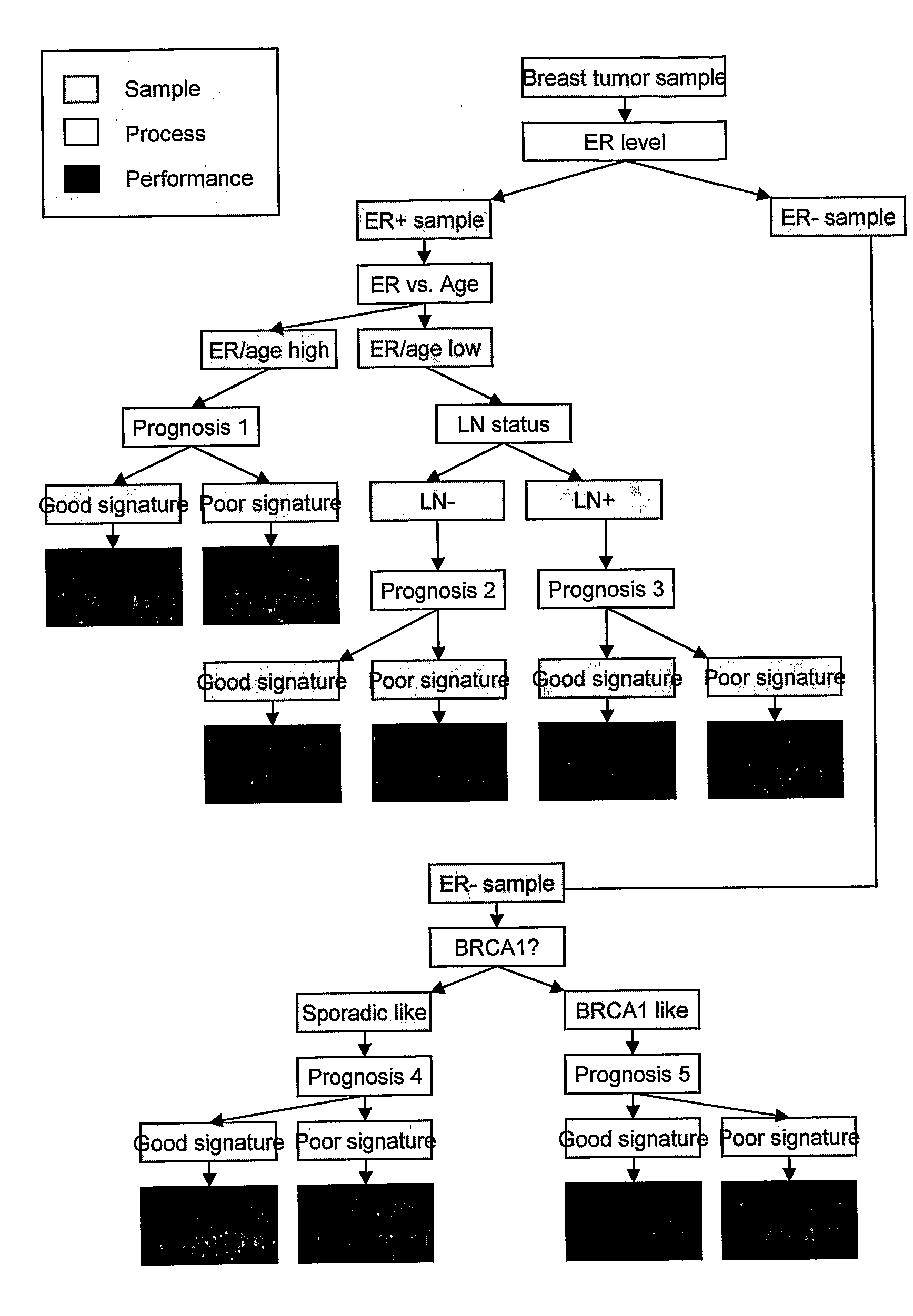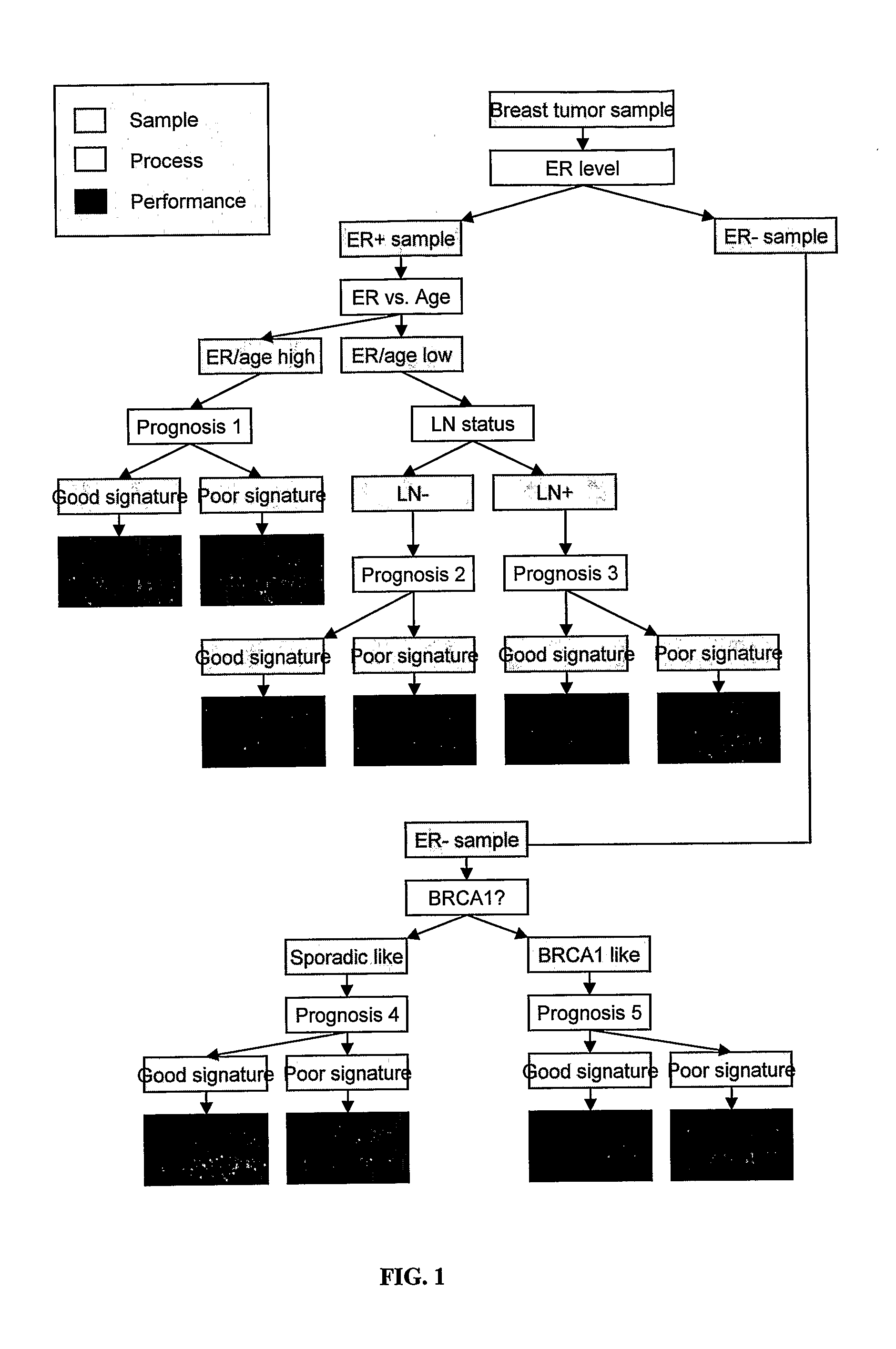Classification of Breast Cancer Patients Using a Combination of Clinical Criteria and Informative Genesets
a technology of breast cancer and clinical criteria, applied in the field of breast cancer patients classification using a combination of clinical criteria and informative genesets, can solve the problems of inability to guarantee success, inability to induce breast tumors with the latter approach, and inability to achieve the effect of reducing the risk of breast cancer, and achieving good prognosis
- Summary
- Abstract
- Description
- Claims
- Application Information
AI Technical Summary
Benefits of technology
Problems solved by technology
Method used
Image
Examples
Embodiment Construction
5.1 Introduction
[0065]The present invention provides methods for classifying individuals having a condition, such as a disease, into one or more subsets of individuals, where individuals in each subset are characterized by one or more phenotypic or genotypic characteristics of the condition. The individuals may be eukaryotes or prokaryotes, may be animals such as mammals, including but not limited to humans, primates, rodents, felines, canines, etc., birds, reptiles, fish, etc. “Individuals” as used herein also encompasses single-celled organisms, or colonies thereof, such as bacteria and yeast. The condition may be a disease, such as cancer, and may be a specific cancer, such as breast cancer. The condition may also be an environmental condition, such as exposure to a toxin, pollutant, drug, proximity to urban or industrial areas, etc.
[0066]The present invention provides methods of determining the prognosis of individuals having a condition, such as cancer, for example, breast canc...
PUM
| Property | Measurement | Unit |
|---|---|---|
| size | aaaaa | aaaaa |
| cumulative lifetime risk | aaaaa | aaaaa |
| genomic stability | aaaaa | aaaaa |
Abstract
Description
Claims
Application Information
 Login to View More
Login to View More - R&D
- Intellectual Property
- Life Sciences
- Materials
- Tech Scout
- Unparalleled Data Quality
- Higher Quality Content
- 60% Fewer Hallucinations
Browse by: Latest US Patents, China's latest patents, Technical Efficacy Thesaurus, Application Domain, Technology Topic, Popular Technical Reports.
© 2025 PatSnap. All rights reserved.Legal|Privacy policy|Modern Slavery Act Transparency Statement|Sitemap|About US| Contact US: help@patsnap.com



